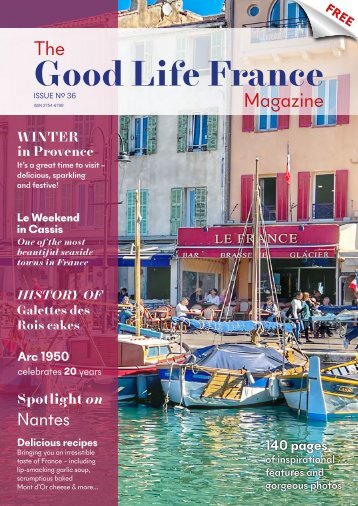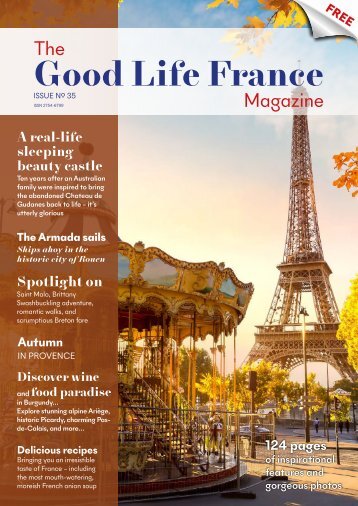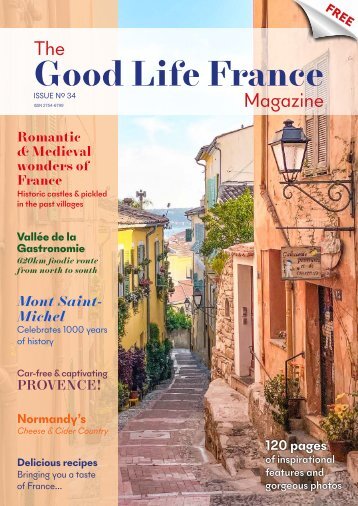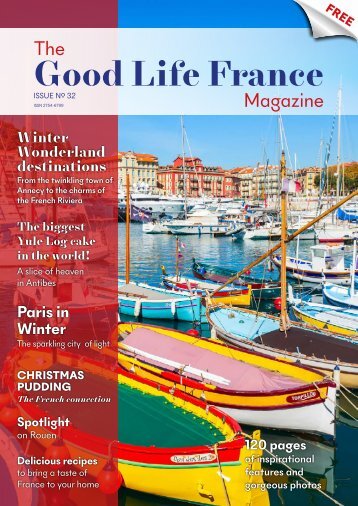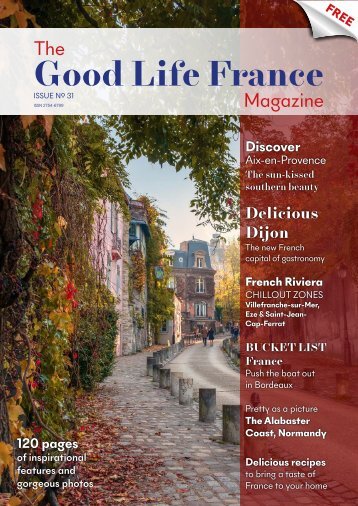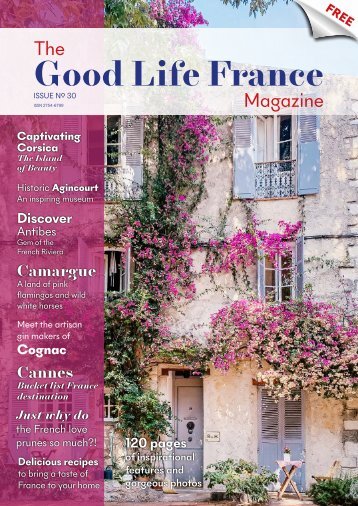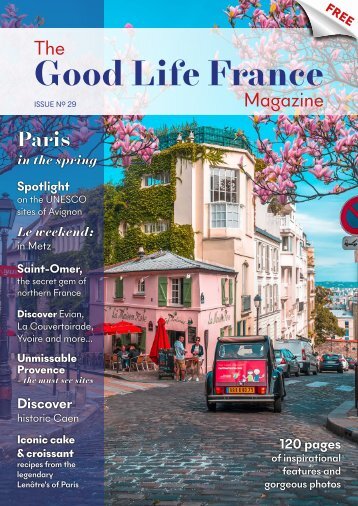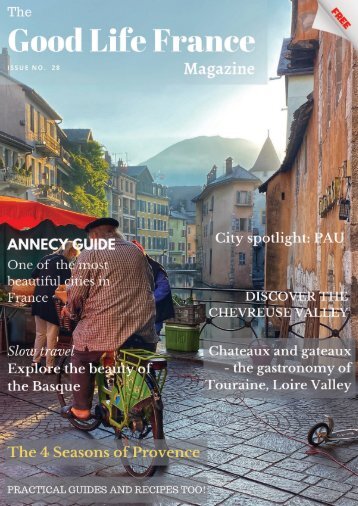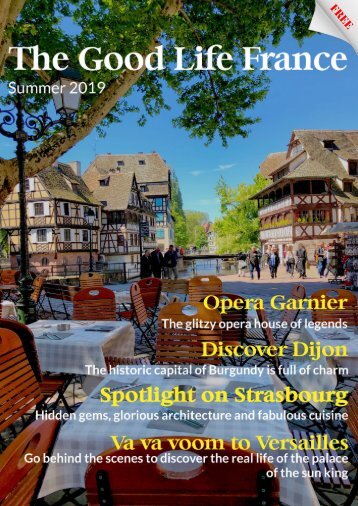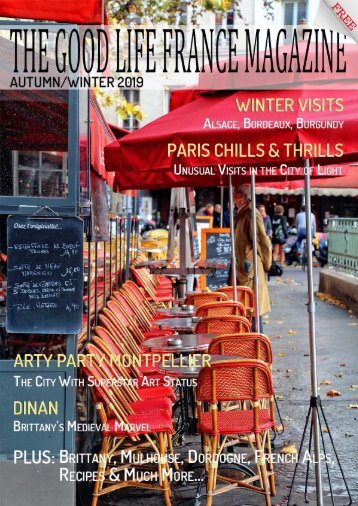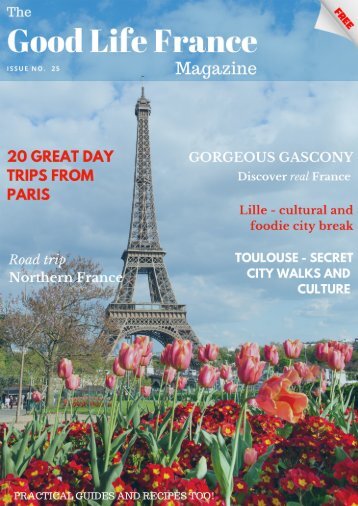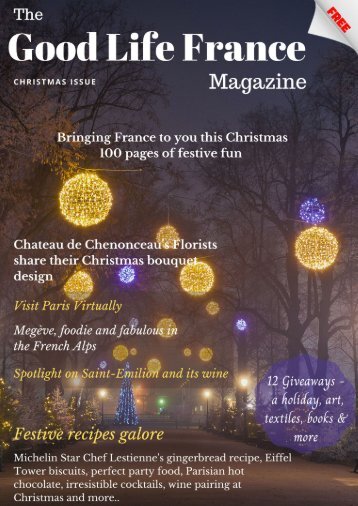
The Good Life France Magazine
The Good Life France Magazine brings you the best of France - inspirational and exclusive features, fabulous photos, mouth-watering recipes, tips, guides, ideas and much more...
Published by the award winning team at The Good Life France
Spring 2022
56 | The Good Life
56 | The Good Life France
Lost Monuments of Paris Sue Aran explores the history of two of Paris’s lost palaces… Paris is a city of contrasts – light and dark, old and new, past and present. Erased from the memories of most Parisians, however, are two buildings: the Palais du Trocadéro and the Palais Bardo. These ephemeral constructions of grandeur were richly imagined for the Paris World Fairs Expositions Universelle. Paris hosted seven world fairs beginning in 1855 and ending in 1937. Visitors flocked from around the world and in 1900, Paris broke records with more than 50 million visitors and 83,000 exhibitors at that year’s Fair. Palais du Trocadéro The Palais du Trocadéro was built for the Exposition Universelle of 1878 by architect Gabriel Davioud. He was a colleague of Georges- Eugène “Baron” Haussmann, the urban planner who was responsible for the spectacular renovation of Paris during the reign of Napoléon III in the mid-19th century. Davioud designed most of the Parisian street furniture we see today, including the benches, lamp-posts, signposts, fences, balustrades, kiosks, pavilions, bandstands, monuments and fountains, the most recognizable of which is the landmark fountain at Place Saint-Michel. The Palais du Trocadéro was built on the hill of Chaillot, across the Seine from the Eiffel Tower in the 16th arrondissement. The Palais was named in honour of the 1823 Battle of Trocadéro in which the fortified Isla del Trocadero in Spain was captured by French forces under the leadership of the Duc d’Angoulême, the son of Charles X. Davioud conceived the elaborate palace as a pastiche of Byzantine and Moorish architecture where meetings of international organizations could be held during the fair. There was a large concert hall flanked by two 76-meter (249-foot) towers. The hall contained a large Palais de ChaillotPalais du Trocadero, Public domain, via Wikimedia Commons organ built by Aristide Cavaillé-Coll, the first large organ to be installed in a concert hall in France. It is still in use at the Auditorium Maurice Ravel in Lyon. The building proved unpopular, but the cost expended in its construction delayed its replacement for nearly 50 years, and the central building was finally demolished in 1937. It was replaced by the Palais de Chaillot for the International Exhibition of Arts and Techniques held in 1937. The wings of the Palais du Trocadéro were reused for the Chaillot building. It’s now home to four cultural institutions: the City of Architecture and Heritage, the National Maritime Museum, the The Good Life France | 57
- Page 1 and 2:
FREE The Good Life France ISSUE N
- Page 3 and 4:
Bienvenue Bonjour and bienvenue to
- Page 5 and 6: CONTENTS The Good Life France Magaz
- Page 7 and 8: 92 Language New series - 5 Minute F
- Page 9 and 10: PARIS in the spring “When spring
- Page 11 and 12: of asparagus and sweet strawberries
- Page 13 and 14: Paris flower market © Nathalie Gef
- Page 15 and 16: Au Vieux Paris d'Arcole © Nathalie
- Page 17 and 18: Think of Caen and most likely the t
- Page 19 and 20: y chatting about the incredible dis
- Page 21 and 22: and majestic, one of the largest me
- Page 23 and 24: L’Okara, 24 Rue Froide, 14000 Cae
- Page 25 and 26: Why head to the south of France whe
- Page 27 and 28: Saint-Omer Saint-Omer in the Pas-de
- Page 29 and 30: Palais de Cathédrale Around the gr
- Page 31 and 32: The Jesuit Chapel Next door to the
- Page 33 and 34: The Audomarois Marshlands Hire a bo
- Page 35 and 36: ockets. Today it is a fascinating a
- Page 37 and 38: “Anyone been to Metz?” I asked
- Page 39 and 40: Train station of Metz © Philippe G
- Page 41 and 42: Where to eat El Theatris in Place d
- Page 43 and 44: Beaux Village de France: La Couvert
- Page 45 and 46: © TripUSAFrance “It’s so extra
- Page 47 and 48: 3 Must-sees in Aveyron Aveyron is a
- Page 49 and 50: The Good Life France | 49
- Page 51 and 52: two more Popes to reign in France,
- Page 53 and 54: © Jill Converyr Saint-Bénézet br
- Page 55: uilt to protect the city from the a
- Page 59 and 60: Clockwise: Palais du Bardo, vintage
- Page 61 and 62: Spotlight on: EVIAN MAP The spa tow
- Page 63 and 64: Lac Leman Lac Leman (Lake Geneva in
- Page 65 and 66: The 467-acre 150 room hotel opened
- Page 67 and 68: AMY McPHERSON finds beauty and adve
- Page 69 and 70: ‘Actually, many of the French Nor
- Page 71 and 72: , Haute-Savoie Yvoire, in Haute-Sav
- Page 73 and 74: 14th century Chateau d’Yvoire Art
- Page 75 and 76: Les Calanques, Peter Jones Cassis,
- Page 77 and 78: Pont du Gard The Stunning Roman Aqu
- Page 79 and 80: © Bassin de Lumieres, Bordeaux -5
- Page 81 and 82: Cite Internationale de la Gastronom
- Page 83 and 84: 30 June-3 July: Le Mans Classic ret
- Page 85 and 86: delivering truly unforgettable imme
- Page 87 and 88: Vineyard in the Rhône Valley Ville
- Page 89 and 90: Cruising the Rhône France is criss
- Page 91 and 92: © David Jefferson river is 200m ac
- Page 93 and 94: French from English. Had déjà vu
- Page 95 and 96: Paris in the spring by Yvonne Rodri
- Page 97 and 98: Brantome, Dordogne by Ian Walls Bra
- Page 99 and 100: We have more than our fair share of
- Page 101 and 102: Limousin Limousin has been my home
- Page 103 and 104: What is a French Assurance Vie We t
- Page 105 and 106: If you’ve ever sighed over a phot
- Page 107 and 108:
folded dough a quarter turn and rol
- Page 109 and 110:
Makes 15 Active time: 10 minutes +
- Page 111 and 112:
emaining butter from the refrigerat
- Page 113 and 114:
Makes 2 desserts, each serving 6 Ac
- Page 115 and 116:
Makes 2 cakes, each serving 6 Activ
- Page 117 and 118:
Makes 2 cakes, each serving 8 Activ
- Page 119 and 120:
https://www.frenchestateagents.com/
Inappropriate
Loading...
Mail this publication
Loading...
Embed
Loading...



